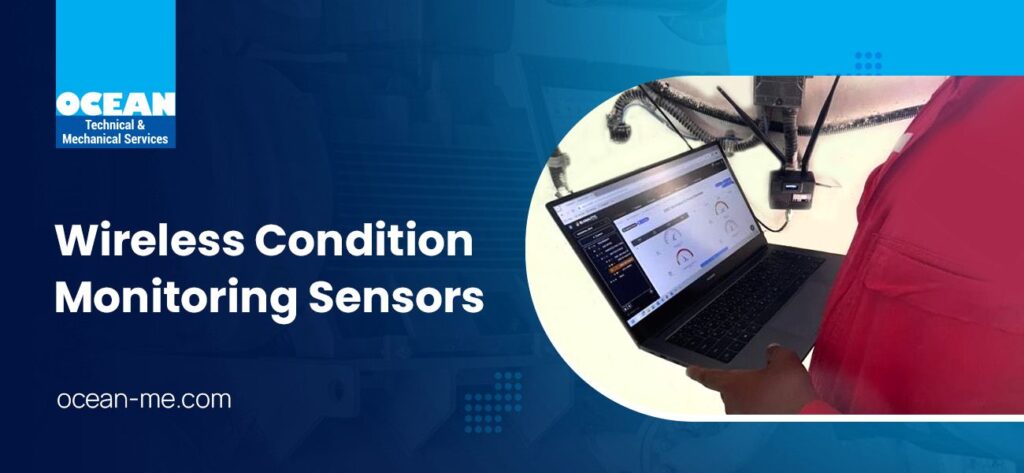Our Services
Dynamic Field Balancing
Dynamic Field Balancing
You might be a service company that performs overhauling for impellers or a part of the production industry—we have a team of experts who offer the perfect solutions to help you fulfill the precision balancing requirements. The rotating equipment such as blowers, engines, fans, generators, etc. demands high ranges of temperature and pressure to work. These undergo regular wear and tear, hence they need to manage the vibration levels with balanced maintenance schedules.
With dynamic balancing, you can increase the vibration levels of the machinery and its components, which thereby minimizes power consumption, enhances bearing life and contributes to the durability of the machine. At Ocean, we offer Dynamic Balancing services for rotating equipment and machinery with our dedicated team of specialists.
What is Dynamic Field Balancing?
Whenever machinery creates an unbalance, it could be due to the accumulation of dirt or wear & tear on the impeller. This could turn dangerous to the vibration characteristics of the machine and create a catastrophic failure. Rotation imbalance can induce the centrifugal force to multifold and can make the system lose equilibrium which results in breakdown. The residual unbalance is categorized into static unbalance, dynamic unbalance, & couple unbalance.
Dynamic balancing adds counterweights or eliminates the weight on the same side to maintain the healthy operating condition of machinery and minimizes the unbalanced forces in rotating parts. Ocean provides accurate dynamic field balancing solutions to ensure that the rotating devices operate appropriately and are free of vibration.
Dynamic balancing or in situ balancing offers:
- Rotor balance for turbines, fans, armature, and other rotating equipment.
- Smooth machine operation and high service life.
- Good bearing condition and adequate lubrication for the machine.
- Symmetric mass distribution and vibration-free process.
- Noise-free working ecosystem.
Why is In Situ Balancing so crucial?
A machine is well-balanced when it has a quiet motor to manage the work. Vibrations create huge noise, and if you leave it unattended, it starts creating problems. Noise can exhaust the operators and people at the workplace, which causes low productivity. There are several other concerns that dynamic balancing can address as listed below:
- To improve the service life
The vibrations from the machine can cause high stress with the seals, bearings, foundations, etc. Dynamic balancing acts against them and triggers the service life.
- To guarantee security
Eliminating the unbalance can maintain the frictional tightness of components and bolts. You can also reduce downtime or equipment outages.
- To focus on quality
High vibrations make the manufacturing process difficult with the machines. Hence balancing supports the quality of the production and keeps work streamlined.
- To outshine the competition
Noisy operation negatively impacts the competitiveness of any product. Balancing the equipment for vibrations can let you gain an edge.
- For perfect balancing solutions
Field balancing can help your pumps, rotors, turbo machinery, mill fans, generators, crankshaft, and other equipment to maintain accurate processes.
- To diagnose machine
Our dedicated team inspects your equipment, diagnoses the need, and enhances the condition with proper testing methods.
How dynamic balancing works
To perform dynamic balancing, you attach the sensors to the bearing pedestals. This lets you understand the imbalance between two planes, where you can make the corrections. The factors like length and operating speed of the machine are also taken into consideration. While measuring the desired residual imbalance tolerance levels, you should consider the total weight of the rotor. This is because the calculations that rely only on the weight of the impeller might produce the least tolerance than what is required.
Dynamic field balancing can be either single-plane, dua-plane, or multi-plane balancing. Couple balancing needs two planes to balance the equipment and minimize the vibration amplitudes to the desired limits.
The following methods can help to reduce unbalance in machinery:
- Removal of excess dirt that accumulates in the equipment with use and over time.
- Impeller balancing prevents cavitation and makes sure the velocity and pressure of fluids are optimal.
- Prevents internal corrosion of the motor parts and components.
- Acts against the thermal and mechanical distortion of the machines.
Benefits of well-balanced operating Machine
Once equipment operates with a balance, it exhibits the best functioning. Equipment that works in smooth order can contribute to the flow of work and let it function uninterruptedly. Here are the benefits you get from a balanced operating machine:
- Elimination of excess vibration will help to expand the life of motor bearings.
- When you balance machine Vibrations, it keeps the motor framework up.
- Balancing lets the machine avoid excess heat caused due to vibration.
- It avoids noise and the risk of injuries, hence improving overall productivity.
- Balanced motors help to reduce downtime and sudden equipment failure.
Ocean is a prominent Dynamic field balancing service provider in Oman, with proven expertise in managing rotating equipment seamlessly. We take care of the concerns of overhung rotors, erroneous configurations, and misalignments of machinery to give them high durability. Being a leading balancing service provider, we offer quality precision services that prevent the need for frequent maintenance or repair of the machine.





